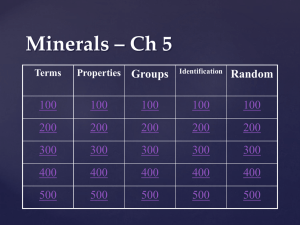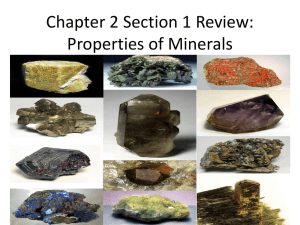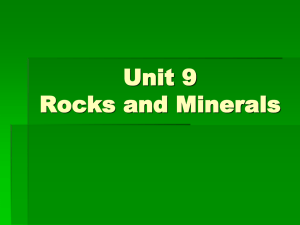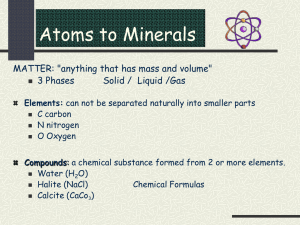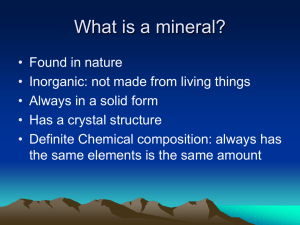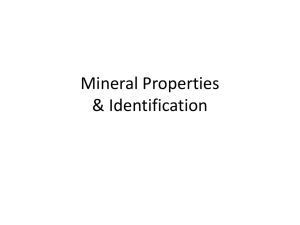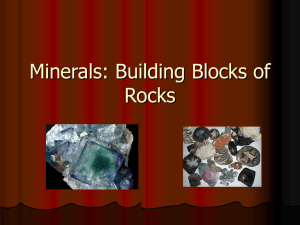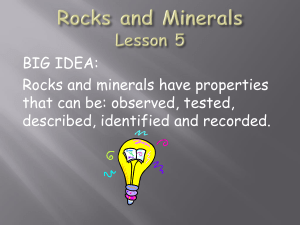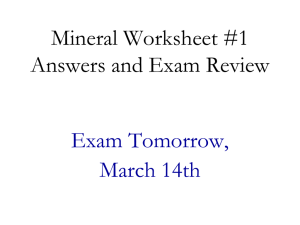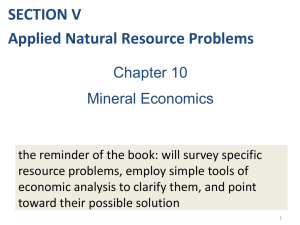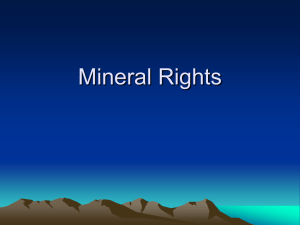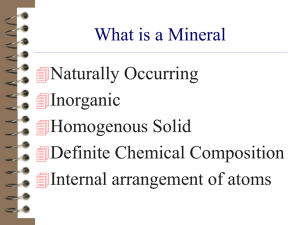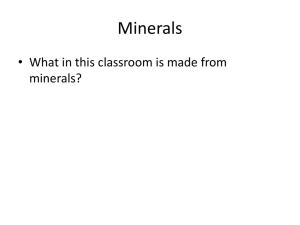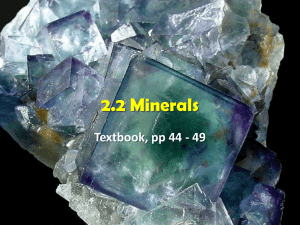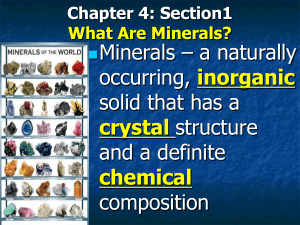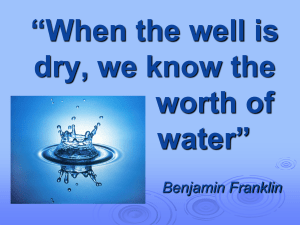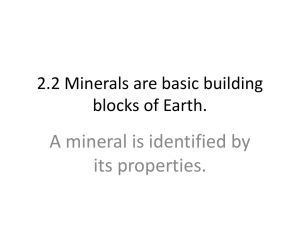Ch 2 3 Properties of Minerals
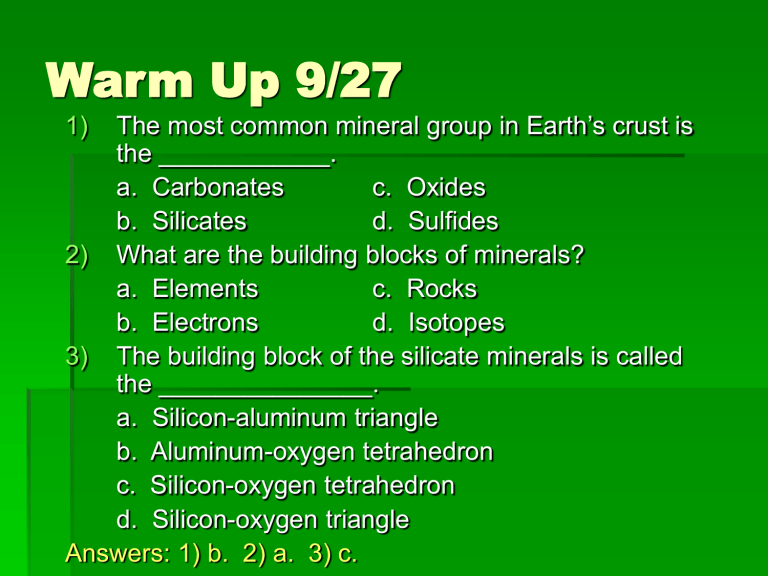
Warm Up 9/27
1) The most common mineral group in Earth’s crust is the ____________.
a. Carbonates b. Silicates c. Oxides d. Sulfides
2) What are the building blocks of minerals?
a. Elements c. Rocks b. Electrons d. Isotopes
3) The building block of the silicate minerals is called the _______________.
a. Silicon-aluminum triangle b. Aluminum-oxygen tetrahedron c. Silicon-oxygen tetrahedron d. Silicon-oxygen triangle
Answers: 1) b. 2) a. 3) c.
Properties of
Minerals
Chapter 2, Section 3
Color
Small amounts of different elements give the same mineral different colors
This property is not often used to identify minerals
Streak
Streak is the color of a mineral in its powdered form
Streak is obtained by rubbing a mineral across a streak plate
The streak’s color never varies between different colors of a mineral
Can also see the differences between minerals with metallic lusters and minerals with nonmetallic (no streak is produced)
Luster
Luster is used to describe how light is reflected from the surface of a mineral
Minerals that have the appearance of metals have metallic lusters
Minerals with a nonmetallic luster are described with many different adjectives
(glassy, pearly, silky, earthy, brilliant)
Luster
Crystal Form
Crystal form is the visible expression of a mineral’s internal arrangement of atoms
When a mineral develops slowly, it will form a well-defined crystal
Most of the time, minerals are competing for space, resulting in an intergrown crystal structure
Crystal Form
Concept Check
What two conditions produce crystals with well-defined faces?
Unrestricted space and a slow rate of formation
Hardness
Hardness – a measure of the resistance of a mineral to being scratched
The Mohs scale consists of 10 minerals arranged from 10 (hardest) to 1 (softest)
Diamond, the hardest mineral on Earth, can scratch anything
You can use your fingernail, copper plate, glass, quartz, etc.
Concept Check
What are three of the most useful properties for identifying unknown minerals?
Hardness, streak, and luster
Cleavage
Cleavage is the tendency of a mineral to cleave, or break, along flat, even surfaces
Some minerals have structures which allow them to break easily into sheets
(mica)
Other minerals have very strong bonds, and fracture instead
Cleavage
Fracture
Minerals that do not show cleavage when broken are said to fracture (the uneven breakage of a mineral)
Concept Check
How are cleavage and fracture different?
Cleavage is the tendency for a mineral to break along flat, even surfaces. Fracture is the uneven breakage of a mineral.
Density
Density is the property of all matter that is the ratio of an object’s mass to its volume
Density (d) = mass (m) / Volume (V)
Density is usually expressed in g/cm 3 in
Geology
Many common minerals have densities between 2 and 5 g/cm 3
The density of a pure mineral is a constant value, and can be used to determine the purity or identity of some minerals
Distinctive Properties of
Minerals
Some minerals can be recognized by other distinctive properties
Some minerals are magnetic, some you can see through, some streaks smell like rotten eggs, and some will bubble when acid is placed on them
A mineral’s properties depend on the elements that compose the mineral (its composition) and its structure (how its atoms are arranged)
Assignment
Read Chapter 2, Section 3 (pg. 50-55)
Do Section 2.3 Assessment #1-6 (pg. 55)
Study for the Chapter 2 Quiz!


